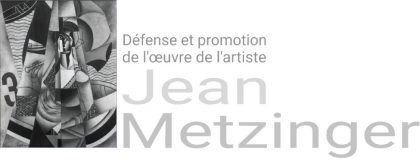Catalogue Raisonné Jean Metzinger

Número: AM-09-003 Jean Metzinger
Date: 1909
Titre: Still Life with Fruit (Nature Morte aux Fruits)
Technique: Oil on panel
Dimensions: 33 x 41 cm
Inscriptions: Signed (lower right)
Provenance: Georg Pauli Collection, Stockholm.
Svensk-Franska Konstgalleriet, Stockholm, auction no. 36, “Georg och Hanna Paulis samling”, 20 March 1942, lot 440.
Herman Gotthardt Collection, Malmö (acquired at the above sale).
Private collection (by descent from the above).
Christie’s, London, 20 February 1990, lot 307.
Uppsala Auktionskammare, Stockholm, 19 May 2022, lot 303 (as circa 1917).
Exhibited: Svensk-Franska Konstgalleriet, Stockholm (according to a note on the reverse).
Herman Gotthardts konstgalleri, Malmö (according to a note on the reverse).
Littérature: Joann Moser, Daniel Robbins, Jean Metzinger in Retrospect, The University of Iowa Museum of Art, 1985, no. 81, p. 69, reproduced.
Notes: Closely related to Metzinger’s 1909 Nature morte (AM-09-001) this work of art chronologically follows directly from the artist’s Proto-Cubist experimentations. It is one of Metzinger’s earliest known strictly Cubist works. Multiple perspective is already present in Still Life with Fruit; the vase, carafe and other objects are depicted from the side (in profile) and from above (on oblique angles) simultaneously. The composition is quasi-symmetric, balanced to a large extent by the two recipients flanked on the right and left sides of the table and the background. Horizontal bands make their first appearance in the work of Metzinger. By 1912 this effect would populate the canvases of practically all of the Cubists. Metzinger employs the bands early on as a means of dividing the picture frame into a number of vantage points; the artist rotating around and above the subject capturing glimpses from various frames of reference. This ‘mobile perspective’, first enunciated by Metzinger in 1909, later to become known as ‘simultaneity’, served to depict the ‘total image’ (as opposed to a single vantage point in which only one limited view of the scene would be shown). The origins of this concept are meticulously presented in Volume I of the Metzinger monograph.

